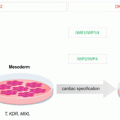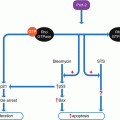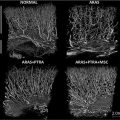M.A. Hayat (ed.)Stem Cells and Cancer Stem CellsStem Cells and Cancer Stem Cells, Volume 122014Therapeutic Applications in Disease and Injury10.1007/978-94-017-8032-2_8
© Springer Science+Business Media Dordrecht 2014
8. Suppression of Differentiation and Maturation of Dendritic Cells: Stem Cells from Different Sources Vary in Their Effect
(1)
Ludwig Boltzmann Institute for Experimental and Clinical Traumatology, AUVA Research Center, Vienna, Austria
Abstract
Mesenchymal stem cells (MSC) are multipotent progenitor cells with the ability to modulate and suppress immune responses in vitro and in vivo. One of their immunoregulatory properties is the suppression of dendritic cell (DC) differentiation, maturation and effector functions thus indirectly affecting T-cell priming and polarization. It has been shown that MSC from different sources and species exert varying immunoregulatory effects on DC in vitro. These findings demonstrate that careful consideration should be taken when choosing a source of MSC for cellular therapy.
Introduction
Mesenchymal stem cells (MSC) are multipotent cells, which can be isolated from various sources including bone marrow, adipose tissue, placenta and others. Under appropriate in vitro conditions MSC have the potential to differentiate towards multiple cell lineages including the adipogenic, osteogenic and chondrogenic lineage (Bajada et al. 2008; Bassi et al. 2011). Since the first findings that MSC confer antiproliferative signals towards stimulated T cells, they have been implicated in the suppression of natural killer cells, cytotoxic T cells, the modulation of B cell functions, the inhibition of dendritic cell (DC) differentiation and the expansion of regulatory T cells (Treg) (Weil et al. 2011). Thus, they are promising candidates for cell therapy and tissue engineering and have already been proven clinically relevant for the treatment of graft versus host disease and autoimmune diseases (Tolar et al. 2010).
One of the immunomodulatory phenomena associated with MSC is their ability to suppress differentiation and maturation of DC. It has been demonstrated that MSC from human and mouse bone marrow (BM-MSC) as well as human amniotic tissue are able to inhibit generation, function and migration of monocyte- and CD34+-derived DC, which we will review in depth in the following sections (Beyth et al. 2005; Nauta et al. 2006; Chen et al. 2007; Djouad et al. 2007; Jung et al. 2007; Ramasamy et al. 2007; English et al. 2008; Magatti et al. 2009; Spaggiari et al. 2009; Chiesa et al. 2011; Kronsteiner et al. 2011). Interestingly, not all MSC populations show equal immunomodulatory properties towards DC in vitro. This chapter aims at providing a review on the current knowledge about MSC-DC interactions and will present a comparison of the suppressive effect of human MSC from adipose tissue and amnion towards DC.
Dendritic Cells
DC are important initiators and modulators of immune responses. As sentinels of the immune system, they are strategically distributed throughout the body. They reside as immature cells in most tissues and specialize in capturing and processing antigen (Ag) to bind peptides via major histocompatibility complex (Banchereau and Steinman 1998; Banchereau et al. 2000). Once they encounter an Ag and receive a so called “danger signal”, for instance in the form of an innate stimulus conveyed by pathogen associated molecular patterns from viruses, bacteria, fungi or protozoa (Reis e Sousa 2004), they express high levels of co-stimulatory (CD80, CD86) and activation molecules (CD83, CD40) and migrate to the lymphoid organs. This maturation process finally leads to the complete transition of DC from antigen-capturing to antigen-presenting cells. Mature DC (mDC) down-regulate their capability for Ag-uptake and gain the ability to prime T-cells and initiate the polarization of the immune response (Banchereau et al. 2000). The cytokine profile secreted by DC critically influences their ability to induce polarization of T-cells into Th1- and Th2-cells mediated by interleukin (IL)-12 and IL-4, respectively (Banchereau and Steinman 1998). Furthermore, it has an impact on tolerance induction. mDC are characterized by high expression of pro-inflammatory cytokines including IL-12p40 and p70, tumor necrosis factor (TNF)-α, IL-1β, IL-6 and nitric oxide (Lutz and Schuler 2002).
In transplantation and contact allergy, DC have been implicated in the induction of both immunity and tolerance. Through their ability to capture and present self-Ag DC are able to induce tolerance in T-cells (Banchereau and Steinman 1998). Three types of DC maturation stages either involved in tolerance or immunity have been described; immature, tissue resident DC inducing T-cell anergy; semi-mature, steady state migratory DC inducing CD4+IL-10+ Treg; and fully mature DC eliciting immunity. Crosstalk of DC with Th-cells by CD40-CD40L interactions might be involved in the switch of DC from tolerance to immunity (Lutz and Schuler 2002).
Mesenchymal Stem Cells Suppress Dendritic Cell Differentiation
It is well established that in vitro culture of peripheral blood monocytes and bone marrow derived progenitors with recombinant interleukin-4 (rIL-4) and recombinant granulocyte macrophage – colony stimulating factor (rGM-CSF) generates immature DC (iDC), characterized by upregulation of the pan DC marker CD11c and resulting in downregulation of the monocyte marker CD14 as well as upregulation of the DC marker CD1a in case of peripheral blood monocytes. Maturation of in vitro generated iDC is typically achieved by stimulation with lipopolysaccharide (LPS) or TNF-α causing upregulation of markers involved in co-stimulation (CD80, CD86), antigen-presentation (HLA-DR), and cell adhesion (CD54) as well as de novo expression of activation markers (CD83, CD40). While immature DC continuously take up Ag by endocytosis during the steady state (Lutz and Schuler 2002), mature DC are characterized by decreased endocytotic capacity.
It has been found that MSC interfere with DC-differentiation and -maturation of monocytes as well as CD34+ fetal and adult hematopoietic progenitor cells by inhibiting upregulation of CD1a and other markers important in antigen-presentation, activation and maturation (HLA-DR, CD80, CD83, CD40) (Jiang et al. 2005; Nauta et al. 2006; Li et al. 2008; Magatti et al. 2009; Lai et al. 2010; Kronsteiner et al. 2011). This effect was reversible upon removal of MSC from co-culture (Jiang et al. 2005; Li et al. 2008).
Monocytes differentiated into DC in the presence of MSC are characterized by suppressed protein production and retention in the G0 phase of the cell-cycle without detectable signs of apoptosis (Ramasamy et al. 2007; Magatti et al. 2009). Co-cultured monocyte-derived cells also downregulate cyclin D2, p27Kip1, cdk4 expression (Ramasamy et al. 2007), TNF-α as well as IL-12 secretion (Magatti et al. 2009; Spaggiari et al. 2009; Kronsteiner et al. 2011). Furthermore they are characterized by increased IL-10 expression (Li et al. 2008).
Mesenchymal Stem Cells Alter Effector Dendritic Cell Functions
MSC-derived DC show impaired T-cell stimulatory capacity (English et al. 2008; Li et al. 2008; Magatti et al. 2009; Spaggiari et al. 2009) and even induce generation of T-cells exerting alloantigen-specific regulatory activity (Li et al. 2008). Chiesa et al. (2011) have demonstrated that MSC impair crosspresentation by DC in vitro. When co- culturing CD8+ T cells with ovalbumin (OVA) pulsed DC which were previously co-cultured with MSC, induction of the early activation marker CD69 on CD8+ T cells failed and proliferation was strongly suppressed. This inability of DC to process soluble OVA is caused by MSC induced downregulation of the proteasome subunit MB-1 and immunoproteasome subunit LMP-10 (Chiesa et al. 2011).
Furthermore, MSC interfere with Toll like receptor (TLR) 4 induced activation of DC by inhibiting MAPK signaling downstream of MyD88, thus inhibiting IL-12 production, a hallmark of effector DC. Overall, MSC cause an accumulation of immature DC by interfering with their activation and antigen processing capacity. The relevance of MSC’s immunosuppressive action on DC has also been demonstrated in an in vivo mouse model of adoptive transfer with OVA specific DO.11.10 transgenic naive CD4+ T cells and subcutaneously injected OVA pulsed DC. Migratory properties of in vitro MSC-conditioned DC from the site of injection were decreased in vivo. Furthermore, intravenous administration of MSC suppressed the capacity of in vivo MSC-conditioned DC to prime OVA specific CD4+ T cells and rapidly blocked migration of DC to the lymph nodes. Reduced numbers of CD11c+ DC characterized by decreased expression of chemokine receptor CCR7 and CD49d were present in lymph nodes, thus demonstrating the potential of MSC to confer their immunomodulatory action after injection in vivo (Chiesa et al. 2011).
Species Specific Differences in MSC Mediated Suppression of Dendritic Cells
Several research groups have demonstrated that human BM-MSC do not affect maturation of already fully differentiated iDC (Li et al. 2008; Magatti et al. 2009; Spaggiari et al. 2009). In contrast, others showed that murine BM-MSC suppressed maturation of TNF-α as well as LPS-stimulated iDC and inhibited their migratory properties as seen by reduction of CCR7 expression and inhibition of E-cadherin downregulation (Jung et al. 2007; English et al. 2008). These contradictory findings indicate possible species dependent differences in MSC-mediated immunomodulation.
Stay updated, free articles. Join our Telegram channel

Full access? Get Clinical Tree







